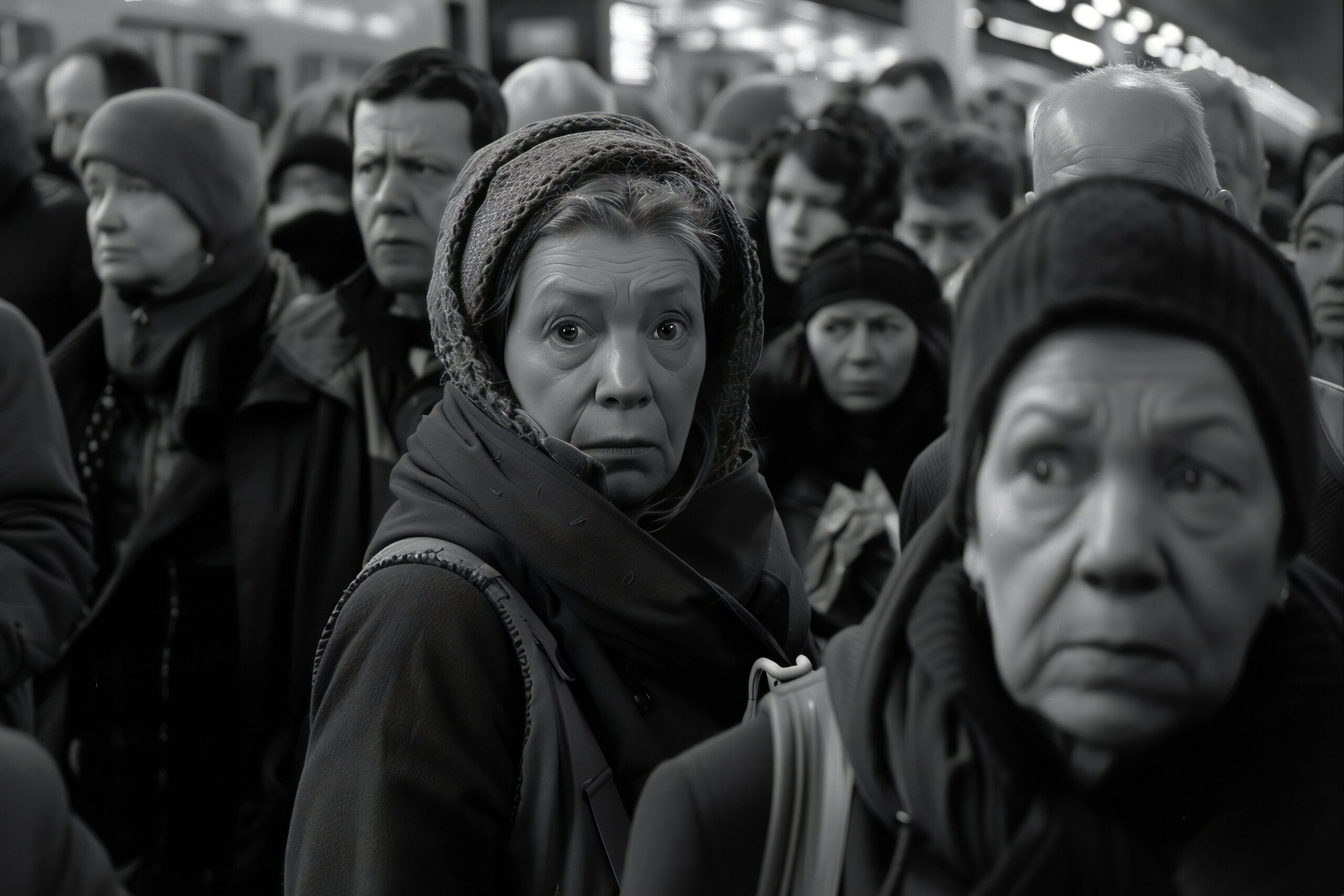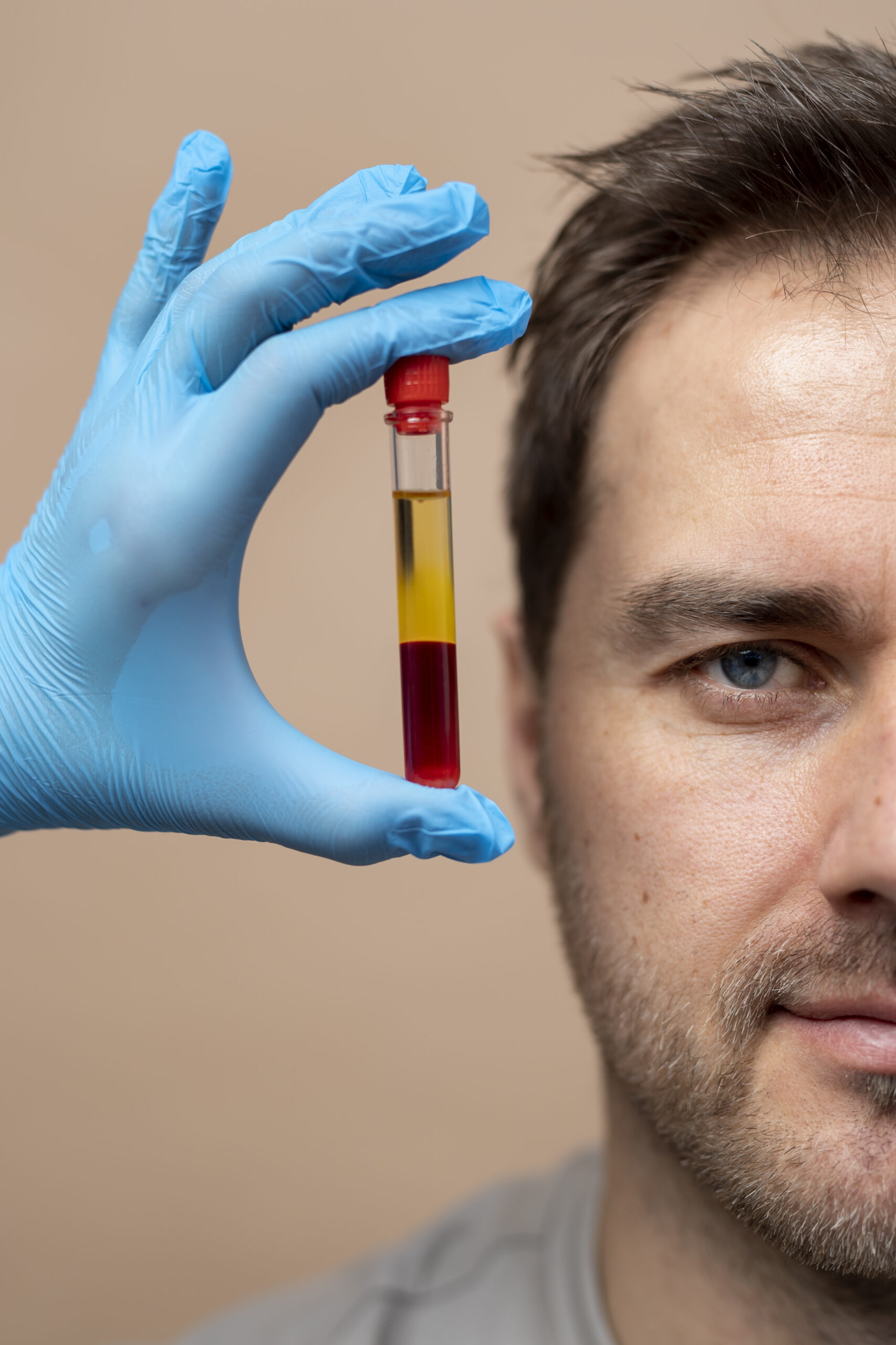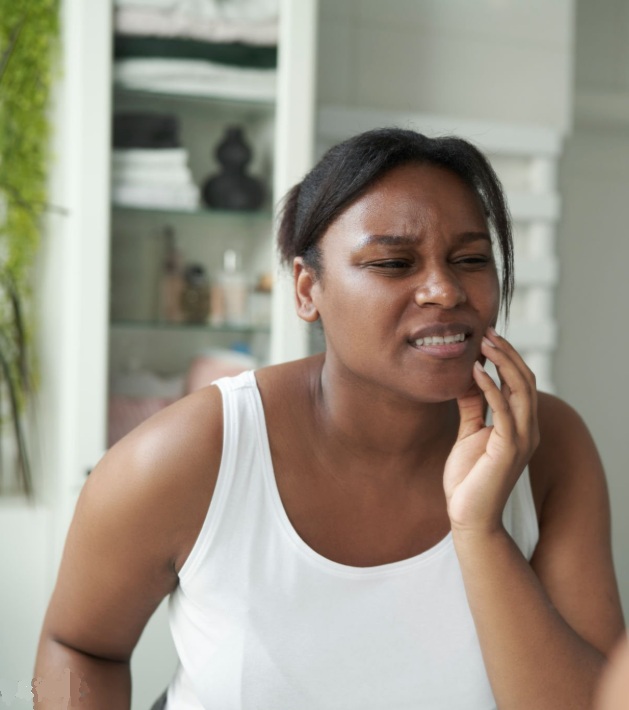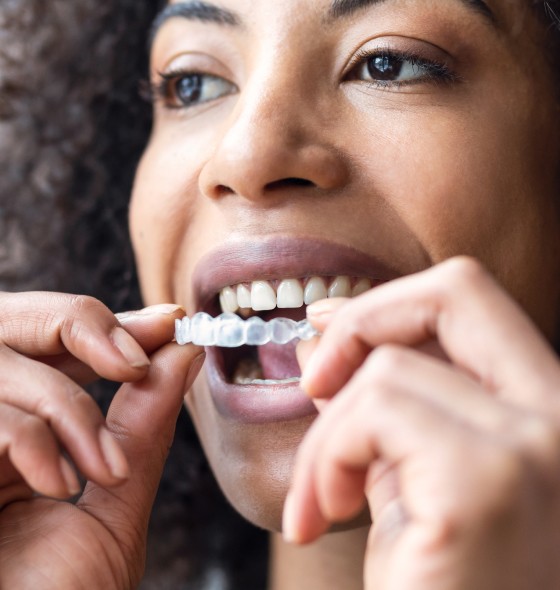Previous information
Referral
The patient was attended in Sarpsborg (Norway).
Patient Complaint
«The lower part of my jaw hurts a lot; it hurts when I eat»
History of presenting complain: The patient attends consultation with Trismus160, however, there was an inflammation of the left and right side of the face, which extends from the jaw to the eye.
she was prescribed Apocycilin 660 mg and Paralgin forte 40 mg® for five days.
Social history
Age: 27 years old.
Married: 10 years.
Occupation: Student.
Medical history
Actual diseases: Hypercholesterolemia and problems with anxiety.
Allergy: Pollen.
Family conditions: Alcohol intakes problems.
Snus: She used snus all day.
Dental history
Oral hygiene technique: Inadequate.
Dental visits: Infrequent.
Oral aperture: The maximum aperture was 35 mm in the anterior zone.
Attitudes towards previous treatment
Good attitude, she was very receptive to listen.
Treatments performed before surgery
1. Cleaning and applying airflow are carried out.
2. Radiological diagnostic method: Periapical radiographs and orthopantomography.
O.P.G
3. Perio chart shows the deep pockets and soft tissue conditions:
A. CAL generalized were <3 mm in molars and 2 mm in anterior teeth. B. Bleeding and plaque Localized. C. Thin biotype. D. Gingival recessions in the lingual side of anterior mandibular teeth. The recessions were miller type 1 from 1-2 mm. F. CPITN code is 2. 4. The patient was taught the instruction for good brushing and flossing techniques. The use of an electric toothbrush is recommended since, according to Ccahuana-Vasquez et al.3 2019 reduces the level of plaque and gingivitis compared to a regular toothbrush. As there are tablets to detect plaque after brushing, the patient can know if the plaque is being removed well or where she needs to improve her technique. 5. Scaling and root planning was performed, the aims for this treatment are: A. To reduce bleeding and the level of plaque to 25%. B. To reduce the depth level of the pocket under 5 mm. C. To keep the horizontal defect less 2-3 mm in the furcation-involved. D. To prevent pain or bad smell. E. To evaluate other techniques such as regenerative or resective surgery if this treatment is not successful in the periodontal revaluation carried out after four months. 6. The patient was educated on the harmful effects of tobacco and alcohol on health. Visiting pages as the Slutta.no by Helsenorge.no was suggested for more information on how to stop smoking and drinking. Pinto-Filho et al. 2018 made a cross-sectional study about alcohol and tooth loss, they found that Alcohol dependence increased 2.5 times the risk for tooth loss. 7. A systematic revaluation was recommended after four mouths to evaluate the periodontal evolution.
Systematic facial examination
The face:
1. Brachyfacial features. Caucasian woman originally from Sarpsborg.
Diagnosis
1. Impacted wisdom teeth producing pain and swelling.
2. Initial generalized periodontitis grade C, stadium 1.
Treatment
1. The treatment was the extraction of 3.8 and 2.8.
2. Wisdom teeth: As seen on the X-ray, the wisdom teeth have impacted the sevens, leading to have possible cavities and endodontic pathologies115. The treatment of choice was the extraction of the wisdom teeth to see the natural state of the sevens.
3. Subsequently, the mucoperiosteal flap was displaced apically with the Prichard periosteum, exposing the bone that covers the wisdom tooth.
With a handpiece and a round diamond bur, the bone around the tooth’s crown was removed. Later a division of the crown and the root was performed with a Lindemann Xl turbine bur.
4. The tooth had to be divided into two parts. Subsequently, the alveolus was curetted, taking into account its proximity to the dental nerve. Finally, two fibrin sponges were placed and sutured with Vycril 4.0.
5. The upper wisdom teeth were extracted.
O.P.G after extraction 3.8, 2.8
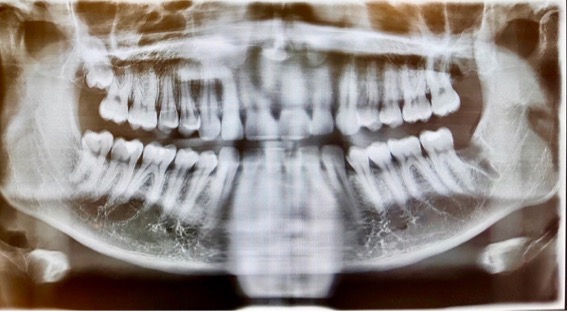
Photos of surgery 2.8
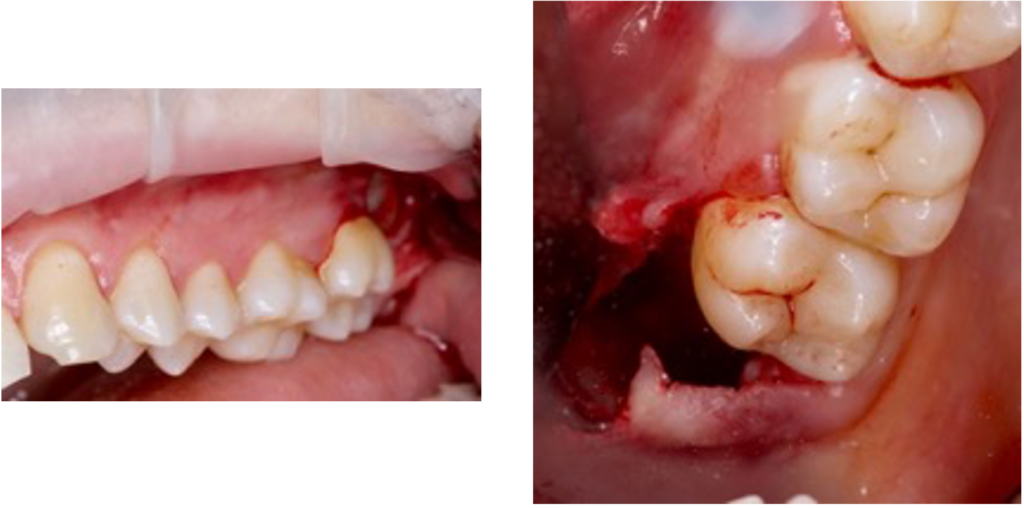
Photo of surgery 3.8
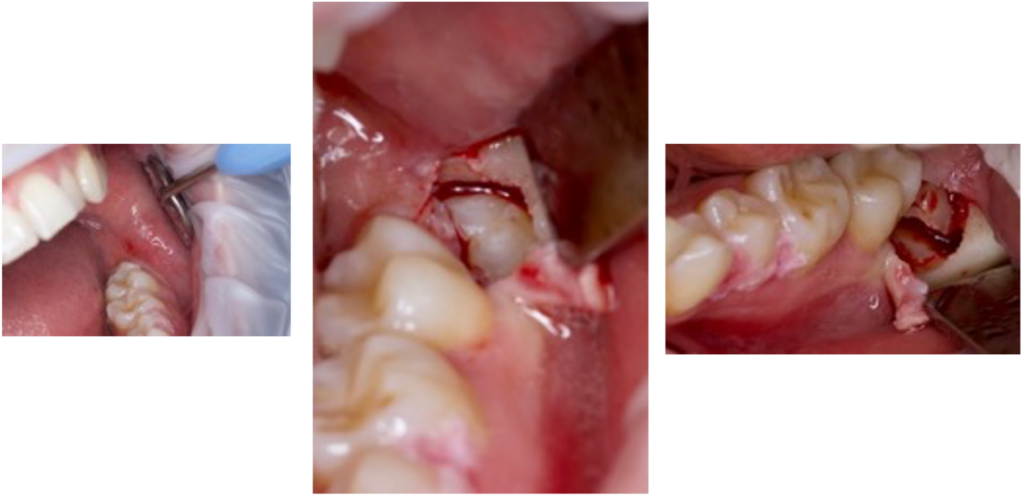
Post-operative indications
1. The patient cannot sleep over left side in two weeks.
2. Have a soft diet for two weeks.
3. Could not touch the cheek strongly or show the stitches to anyone.
4. Use chlorhexidine 0,12% for one week, starting two days after the surgery.
5. Apply ice on the face to decrease the swelling.
Oral medication:
1. Paracetamol 500 mg three times per day for three days.
2. Supplement for vitamin D, to try to decrease the inflammation and help to the healing of the bone10.
3. The patient was under antibiotic prophylaxis.
Evolution and prognosis
In this case, the extractions were carried out without any complications. Her prognosis was very favourable. The level of plaque, bleeding decreased notably after four months check-up. The patient learned to brush her teeth with an electric toothbrush, however, she did not stop using Snus.

